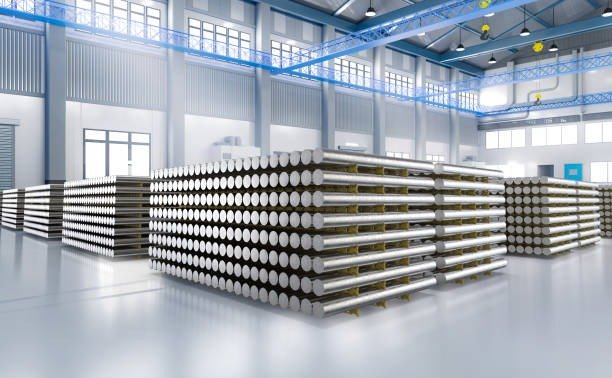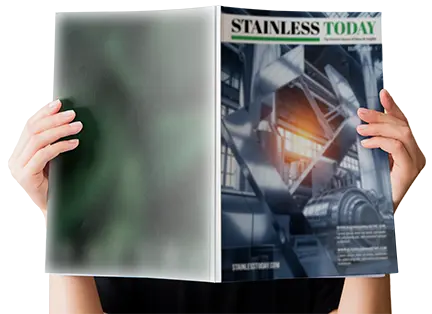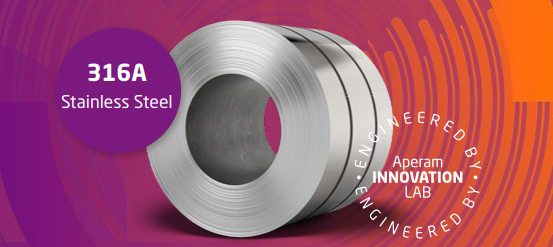The Development of Stainless Steel: 10 Significant Events That Influenced the Sector

From its discovery in 1913 to modern sustainable production, stainless steel has shaped industries worldwide. Innovations in alloys, aerospace, healthcare, and architecture continue to drive its evolution.
The Development of Stainless Steel: 10 Significant Events That Influenced the Sector
One of the most adaptable and extensively utilised materials in the modern world, stainless steel is prized for its strength, ability to withstand corrosion, and visual attractiveness. However, it has undergone revolutionary inventions and scientific breakthroughs during its journey from discovery to industrial supremacy. These ten significant turning points have influenced the stainless steel sector.
1. Initial Findings of Metals Resistant to Corrosion (1821)
When French metallurgist Pierre Berthier noticed in 1821 that iron-chromium alloys were more corrosion-resistant than ordinary iron, he laid the groundwork for stainless steel. He proposed utilising them for cutlery, but there was no efficient method at the time to create such alloys.
2. Modern stainless steel was discovered in 1913
The British metallurgist Harry Brearley’s inadvertent discovery of a rust-resistant steel alloy in 1913 while investigating erosion-resistant cannon barrels marked the actual beginning of stainless steel. His chromium-rich steel, which had a chromium content of about 12.8%, was the first genuine stainless steel and completely changed the metal industry.
3. Growth and Commercialisation (1920s–1930s)
Stainless steel started to be used extensively in cutlery, surgical instruments, and chemical processing equipment by the 1920s and 1930s. The commercialisation of stainless steel manufacture was greatly aided by businesses such as Allegheny Ludlum in the United States and Krupp in Germany.
4. Austenitic stainless steel was introduced in 1924.
Brearley’s finding was enhanced in 1924 by British metallurgist W.D. Hatfield, who created 18/8 stainless steel (18% chromium, 8% nickel), which served as the basis for contemporary austenitic stainless steel, the most widely used stainless steel family today. The strength, resistance to corrosion, and formability of stainless steel were greatly enhanced by this advancement.
5. Utilisation in Infrastructure and Architecture (1929–1930s)
The 1929 spire of the Chrysler Building in New York City was one of the earliest significant architectural uses of stainless steel. Bridges, railroads, and public structures have all used stainless steel due to its success in construction, which demonstrated its durability, resilience to weathering, and aesthetic appeal.
6. Growth into Military and Aerospace Uses (1940s–1950s)
Because of its high strength-to-weight ratio and resistance to corrosion, stainless steel became an essential component in the manufacture of military vehicles, weapons, and aircraft during World War II. Following the war, stainless steel became crucial for rocket engines and spacecraft, contributing to the emergence of the jet era and space exploration.
7. The 1960s and 1970s saw the development of duplex stainless steel.
Duplex stainless steels were created in response to the industrial need for materials that were even stronger and more resistant to corrosion. These alloys offered greater strength and improved resistance to stress corrosion cracking by combining the advantages of ferritic and austenitic stainless steels. For the chemical, maritime, and oil and gas sectors in particular, this was crucial.
8. Super stainless steels were introduced in the 1980s and 1990s.
In order to survive harsh conditions, super stainless steels with increased levels of nickel, molybdenum, and nitrogen were developed by the 1980s and 1990s thanks to advancements in metallurgy. These alloys proved essential for deep-sea exploration, offshore drilling, and high-performance engineering applications.
9. The Use of Stainless Steel in Biotechnology and Medicine (2000s–Present)
Because of its sterilising and biocompatible qualities, stainless steel has become more and more popular in the medical sector for use in surgical tools, medical implants, and hospital equipment. Its use in biotechnology and healthcare has been further expanded by innovations such as antibacterial alloys and nano-coated stainless steel.
10. Pay attention to green manufacturing and sustainability (both now and in the future).
The production of stainless steel is becoming more environmentally friendly these days as producers concentrate on recycling, cutting carbon emissions, and increasing energy efficiency. Stainless steel is an eco-friendly option for contemporary applications because over 80% of it is recyclable. To further lessen its influence on the environment, the sector is also investigating eco-friendly coatings and steelmaking based on hydrogen.
Conclusion
Stainless steel has advanced significantly since its unintentional discovery in 1913 and is now widely used in sectors like infrastructure, healthcare, and aerospace. With continuous advancements in high-performance alloys, smart materials, and sustainability, stainless steel will remain a vital component of contemporary industry and technology.
What do you consider to be the most important turning point in the development of stainless steel? Tell us!










